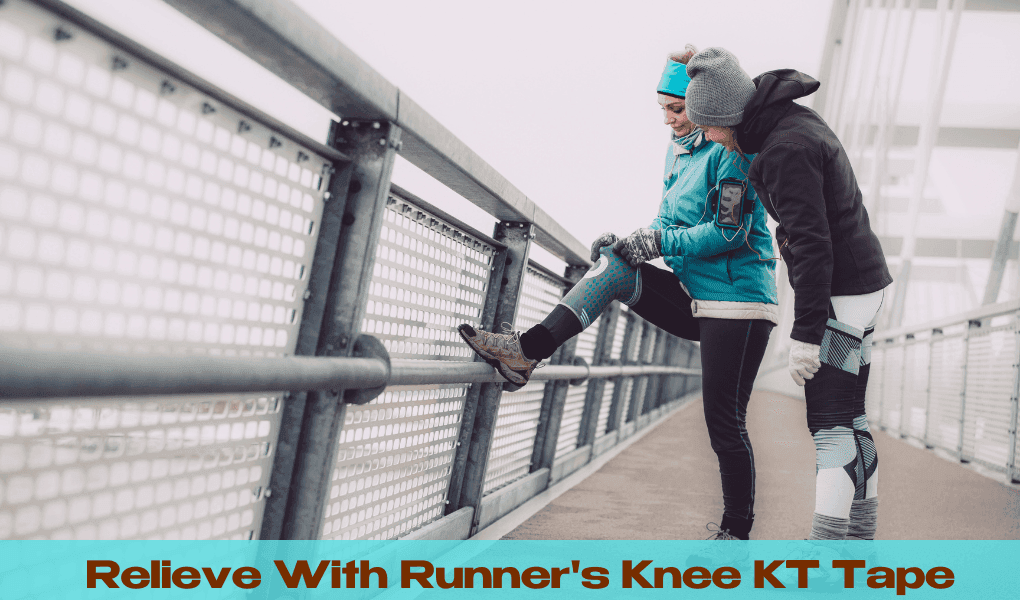
The importance of hydration during running
Are you a runner? you are out for a long invigorating running on a sunny day. The wind is in your hair, and your legs strong beneath you. But suddenly, you start to feel the effects of dehydration creeping up on you running with a bottle of water.
All you can think about is quenching your thirst, and that’s when you the importance of having a trusty running with a bottle of water by your side while running. Welcome to our blog post, where we will delve into the significance of hydration during running and why it should never be underestimated.
So, lace up your running shoes and let’s explore how staying hydrated can take your running game to the next level. This is largely because hydration during exercise is necessary in several ways.
In such ways, prioritization of hydration during your running sessions leads to maximization of the physical limitations of your body and also minimization of risks for sustaining injuries.
Should you carry water while running?
Water may or may not be carried by runners, and this decision normally depends on the length and intensity of the run, the weather, and the runner’s likings. Below are some points that can guide you on whether or not you should carry water when running.
If you’re debating in your minds whether carrying a water bottle with you on a run is necessary, then you must do so especially if it is your first time or you do not know the route and the weather or other conditions.
Benefits of running with a bottle of water
When you are out on a running workout, carrying a water bottle has many benefits which would help in improving the running experience as well as the performance. Some of these benefits for running with a bottle of water.
If a water bottle is part of your running regime, you will be able to balance what your body needs as far as hydration is concerned, improve the functions of your body, and carry out a better and more relaxed running activity.
How to run with a water bottle
Many people think that handling a bottle of water while running is not a big deal. While this may be so, there are some techniques and techniques to keep in mind to make the whole experience relaxed and enjoyable.
Grip and positioning
It is irrelevant whether the steps seem very uncomfortable; the good thing is that people should experiment with their vas a rather comprehensive step. Most runners often run with the bottle on the other side of the handedness, as it helps with the normal swing of the other arm.
Bottle size and weight
The drinking bottle must be moderately heavy so as to carry enough water without making one clumsy. Smaller bottles (8 -16oz) are more favored with longer runs while larger bottles (20-24oz) will be good for long distances.
Bottle type and material
It is a good idea to use light spill proof bottles that have a lid or a vet in order to avoid disasters. Soft bottles are more comfortable to handle than hard bottles and are less inconvenient.
Hydration belt or pack
For longer periods of running or racing, it is quite easy, and even more efficient, to make a hydration belt or pack to lessen the weight and keep the arms free.
Refilling strategy
Running a longer distance with no water will simply not work and therefore one should take precautions to wait before undertaking.
Best practices for carrying a water bottle while running
To avoid the disadvantages while maximizing the good qualities of running with a water bottle, it is important to observe best practices. To get started here are some running tips
Choose the right bottle
An ideal running water bottle is lightweight, easy to hold, leak proof, and fitted for running with. Ergonomic bottles with proper lids and hand or loop carrying are also needed.
Experiment with different carrying methods
Instead of just using your hands to hold the bottle, consider strapping on a hydration belt or pack or switching hands with the bottle until you find the most effective for you.
Practice proper form
Leave your arms to swing freely and don’t squeeze the bottle too much or at all that it disrupts the run. Do not hesitate to change the way you are holding the bottle or the way you are carrying it for the sake of good form.
Be alert when running
Water bottles can either be a hindrance or added weight especially if one decides to run without care of his/her surroundings or when close to uneven surfaces that can cause one to trip or spill water.
Replace or refill as needed
One should be prepared and know when to refill or bring some more stock of bottles for jogs that extend. Use trash bins to throw empty bottles after use to avoid littering.
Stay hydrated before and after your run
Besides drinking water during a run, you should also drink and maintain good fluid levels especially after your workout to help in recovery.
Consider weather and conditions
If it is hot or humid, it will likely be necessary to modify how much water you carry or how you go about encouraging yourself to drink more.
Listen to your body
Remember that your body will require and use certain amounts of water depending on how energetic, intense and long the run is.
When you apply these best practices, you will have a very easy time fitting a water bottle into your running routine in a very effective way ensuring plenty of water o drinking and runner’s satisfaction and pleasant feelings.
Tips for choosing the right water bottle for running
Choosing the right water bottle is perhaps one of the crucial steps that significantly improve a runner experience. Therefore, the following tips will be useful in selecting the best water bottle to suit you.
Size and capacity: Determine how long your runs will be, including your own thirst requirements. On shorter runs, a smaller size bottle (8-12 oz) may suit one’s needs, while longer distances would warrant a bigger size bottle (16-24 oz) to eliminate unnecessary exercise interruption caused by resupplying water.
Material and weight: Avoid buying bulky materials, but rather buy them light and strong materials like BPA free plastics, stainless steel or soft sided water containers. Bulky and heavy containers may be cumbersome during the run and therefore should be avoided.
Grip and ergonomic design: Opt for bottles that have interesting shapes, have rubber grips fitted to them or have a butt strap so that they do not slip and for comfort especially if your hands are wet.
Leak-proof and spill-resistant: Use bottles that have proper secure lids or valves so that there are no spills which may lead to wet surfaces that are unsafe and uncomfortable.
Insulation and temperature control: There are insulated bottles or freeze water bottles that one can keep if you are like many people that, dislike room temperature water or just want cold water or ice for that matter.
Making a choice on what to carry: Determine if you would rather hold the water bottle in your hand, wear a hydration belt or pack, or be able to switch to other methods during long runs.
Cleaning and Maintenance: Check for bottles that have a wide mouth or a removable part which will facilitate easy washing and drying so that mildew or bacterial infection does not develop.
Personal preferences and styles: Desire for specific features is important but so is the need for consumer satisfaction in terms of say, color or design or even a particular brand. These are healthy factors towards consumption of the product.
Hydration strategies for long-distance runners
Among other endurance activities, running long distances or competing requires optimal hydration. Sufficient hydration strategies can help you minimize dehydration, sustain functioning and enhance healing. Here are some tips for long-distance runners.
Pre-hydration: On your long run, ensure that you are not thirsty anymore and witness that by ingesting water or an electrolyte beverage a few hours before your event.
Carry enough fluids: Not all persons will have the same amount of fluid, that’s why the fluid intake can be gauged according to the distance, weather factors and for how long one is going to be exercising. It is advisable to either take a larger water bottle with you or wear a hydration pack or a belt, this will cover your fluids.
Incorporate electrolyte replacement: When engaging in long athletic activities, water is not the only thing that gets consumed but electrolytes as sodium and potassium, etc get taken out too. To restore these, make use of sports drinks or other means, as it would lead to cramps or fatigue in the muscles.
Plan for refilling opportunities:: Look up water stations or plan the route so that you can periodically refill the water bottle in some places you have previously determined.
Change your reach generally: In other words, use different hydration strategies depending on the temperature, humidity or how much you are sweating. When one is in hot or humid areas, it is possible to over hydrate.
Listen to your body: Listen to your body and take necessary measures in relation to things that are usuaLly wondered as “why are these bad?” a good example that can be analyzed is thirst and dark urine as thirst if accompanies large amounts of fluid intake can also be treated.
Consider your individual needs: Age, weight, health, and physical activity, have also to be considered when determining the amount of fluids that should be ingested. If necessary, seek advice from a sports nutritionist or other health professional.
Common mistakes to avoid when running with a water bottle
Running with a bottle of water container could save you from thirst and yet it has its downfalls which can bring discomfort, inefficiency or even injuries. Here are some mistakes one should not make at all, if possible
Gripping the bottle too tightly
Very thick gripped and clenched fingers about the drinks bottle can make the fingers or rather the entire hand very exhausted from cramping and even affecting the running technique. Therefore, allow your fingers to be free and don’t hesitate to use a bottle that comes with a strap or loop.
Carrying an overly large or heavy bottle
This condition is rather strong enough and more stress is criticized which causes the run by ensuring that such pots are only with enough water. Many consider taking heavy antiperspirants and heavy pots to forbid. A rim or collar should be of an adequate size to the length of the clean walk undertaken. Bear in mind the possibilities for refilling.
Placing the bottle too high or too low
Grasping the bottle in the same place at all times without moving is, in fact, a bad practice because of the arms’ position relative to the body and the body in general. Therefore, it is advisable to lower and raise and bend the joints at the elbow.
Improper bottle positioning
Hydration is not about just drinking during your run. Make sure that the body is sufficiently hydrated all the time, but especially before and after any training.
How to properly hold a water bottle while running
It is also necessary for the runner to maintain the correct body mechanics when holding the running with a bottle of water in order to create a comfortable environment, to work efficiently and limit the risk of injury. Here are some ways in which the water bottle should be properly held when running.
Use a relaxed grip: Using the bottle’s neck and underlying portions as leverage so she can clasp the grip is not also how it’s supposed to be done because that would generate disappointment to her hands if any.
Alternate hands: As a means of countering any unease and muscle fatigue, at times do change the bottle from one hand to another when running. This will also enhance proper muscle recruitment.
Maintain the native arm swing: Do not hold the bottle in a manner that exerts unnecessary tension on the arms, rather allow the normal swinging of the arms as much as the hands are not held up.
Do not ignore bottle positioning: Adjust the very hand that carries the bottle around to avoid any discomfort with a very common mistake being that of insisting on only one way of handing the bottle too inefficiently for a chuck of time.
Use a bottle with a strap or loop: Supportive pillow cases are attached to most sport bottles and they help eliminate the stress of holding onto the bottle too tightly and also the chances of dropping it are minimized.
Practice during training: Develop a habit of running with a water bottle early enough in the training cycle to allow your body to get used to it and work on developing the required body coordination.
With a bit more practice and patience, running with a water bottle will become an integrated way in which you stay hydrated and comfortable while running without altering your form or getting injured.
Recommended water bottle options for runners
Among the different types of water bottles available in the market, it can prove rather difficult to settle for one to be used specifically for running with a bottle of water. To this end, I would like to mention certain water bottle options which are focused towards runners
Handheld water bottles with straps or loops
These are specially designed and contain loop or strap which can be tethered to the hands so that the tightening of the several fingers around the bottle is not necessary and thus does not inhibit running with a bottle of water as is the case in the Nathan SpeedDraw Plus, the Ultimate Direction Body Bottle and Amphipod Handheld Hydration Bottle.
Soft-sided or collapsible bottles
You have some pictures on the left in the collage above that show a silicone or Bpa free plastic water bottle, they are easy to compress as you use them, thus making them lighter and less bulky. Such include the Salomon Soft Flask, Platypus SoftBottle, and Hydrapak Soft Flask among others.
Insulated or vacuum-sealed bottles
If you want to maintain the temperature of your water for a longer duration, then insulation or vacuum-sealed bottles like Hydro Flask, Takeya, or Klean Kanteen will be best for you.
Hydration belts or vests
During long runs or races, there are belts available that ensure you hands-free hydration during runtime with many bottle holders like Salomon Pulse, Ultimate Direction Marathon running or Nathan Trail Mix Plus.
Hydration packs or vests
These are often referred to as water backpacks and are a great addition to the traditional running gear. These are normally Camelbak Circuit or Ultimate Direction Ultra Vesta equipped with a part that contains fluids and an extended straw.
Conclusion
When running with a bottle of water, it is important to stay hydrated, as running is a physically strenuous activity which also requires comfort for safety and performance. Having a water bottle or other hydration gadget is very important in maintaining water balance to discourage dehydration.
Test several water bottle for running with different styles, ways of carrying the running with a bottle of water and strategies to maintain hydration while out running until you find what works best for you. It does not matter whether you use your hands to carry a bottle, put on a water belt or a backpack; just ensure that there is no shortage of water and always remain alert to the body.
Thus, by drinking enough water and adhering to all hydrating guidelines, a runner will not only be comfortable but would also be able to improve on the running performance for enjoyment and other desirable outcomes like the fitness goal.








